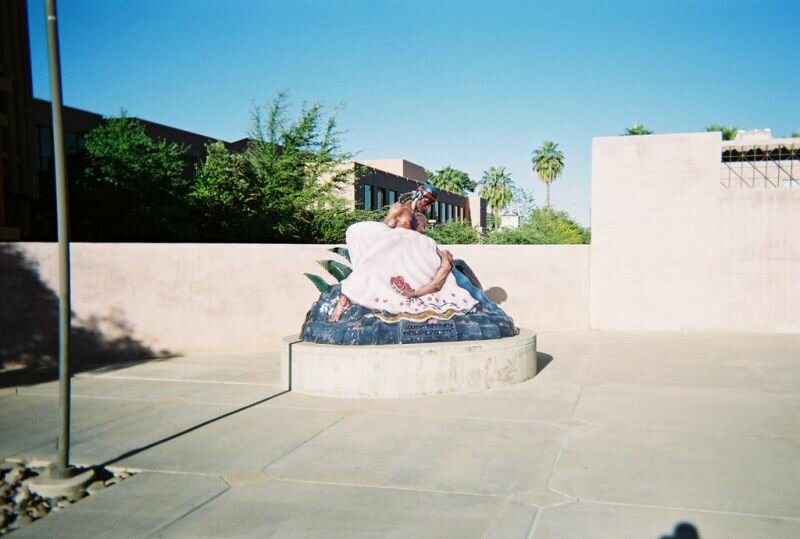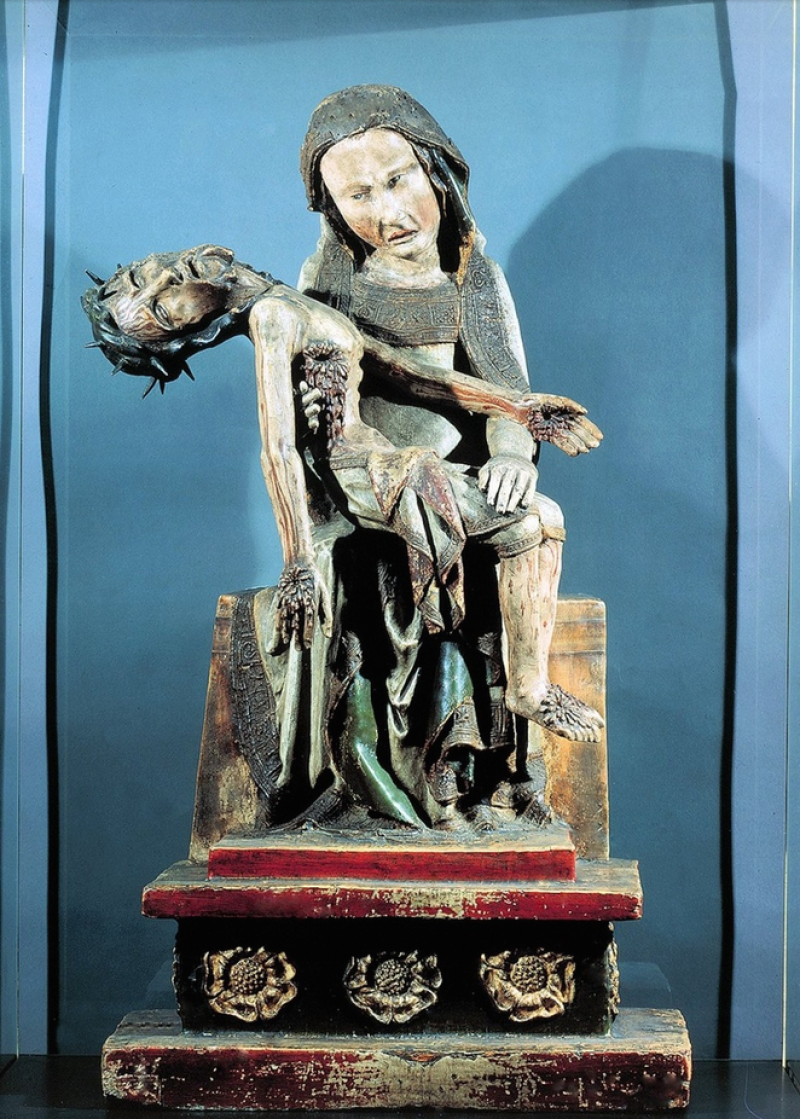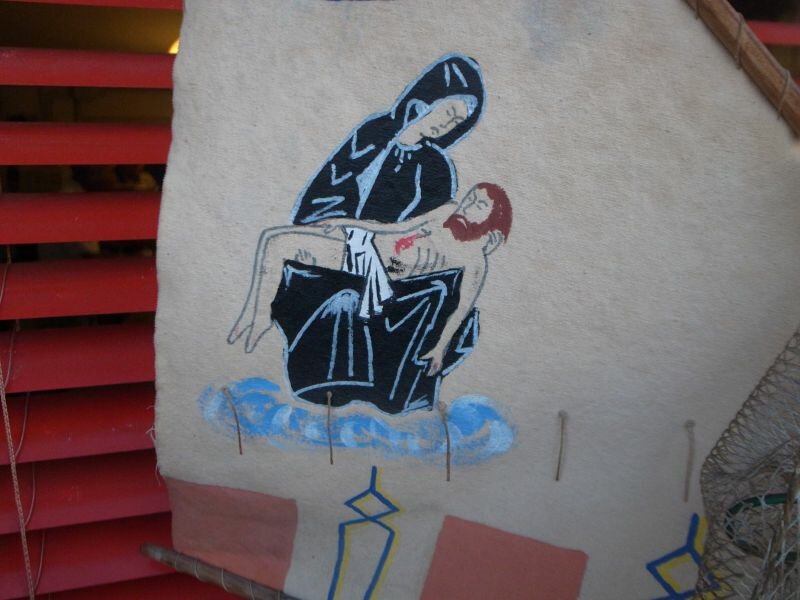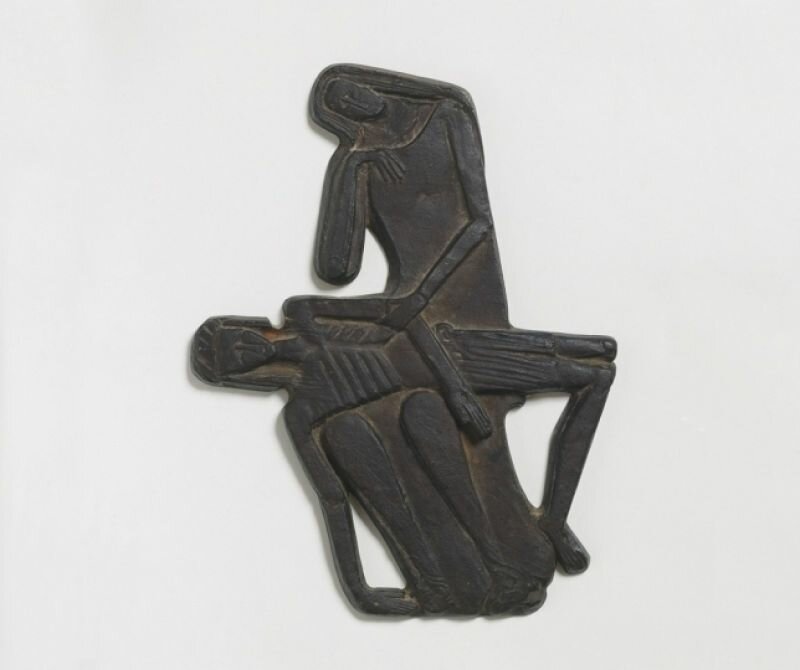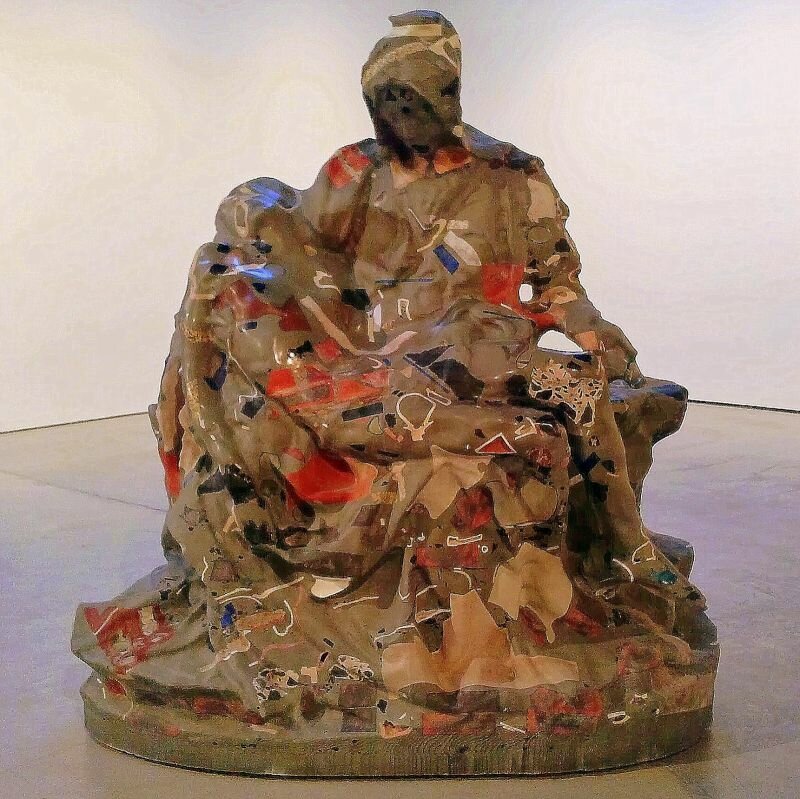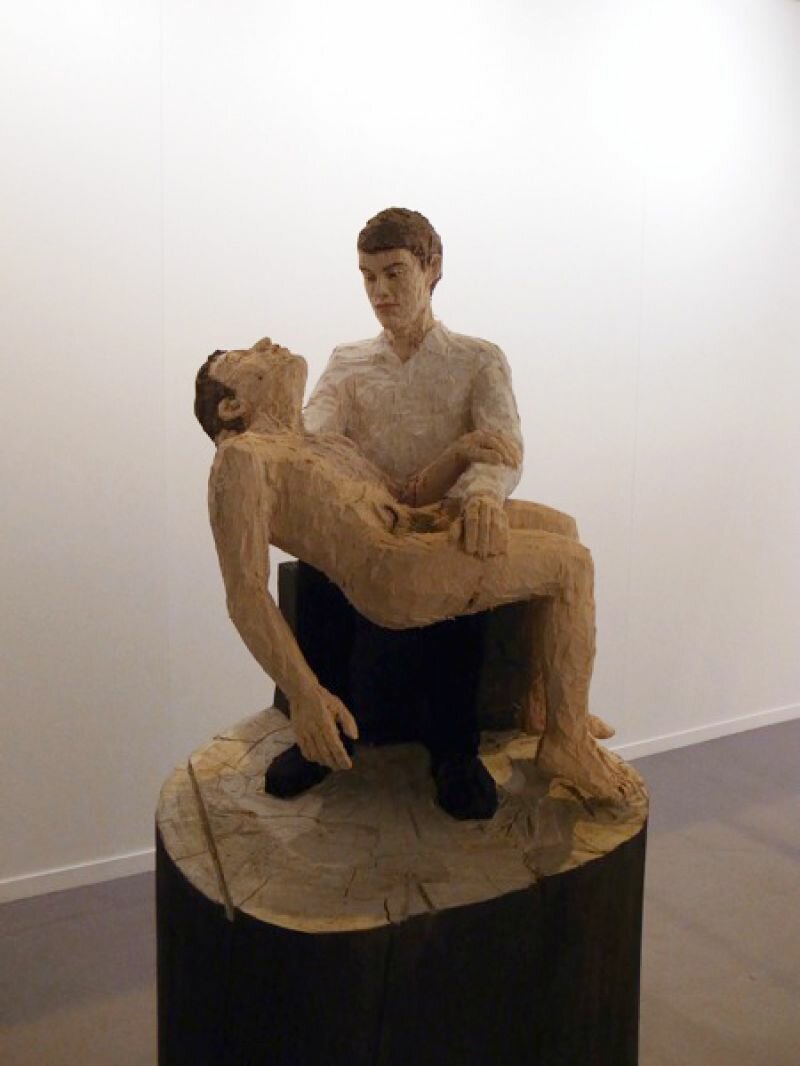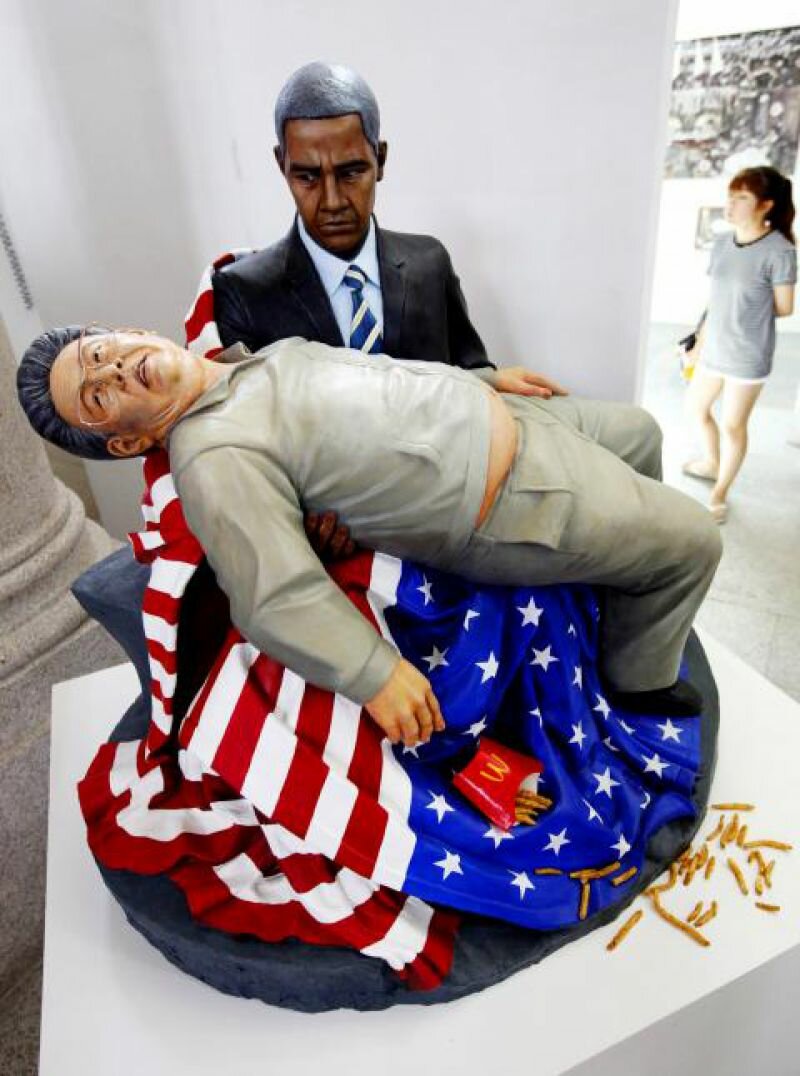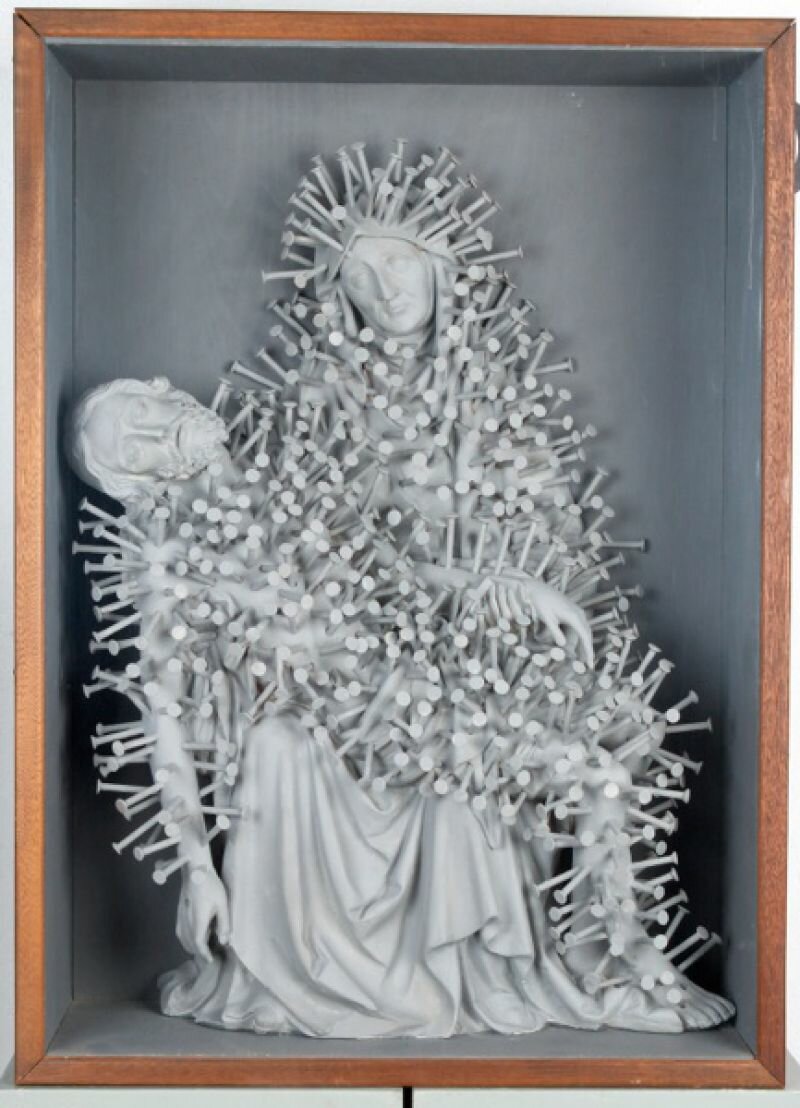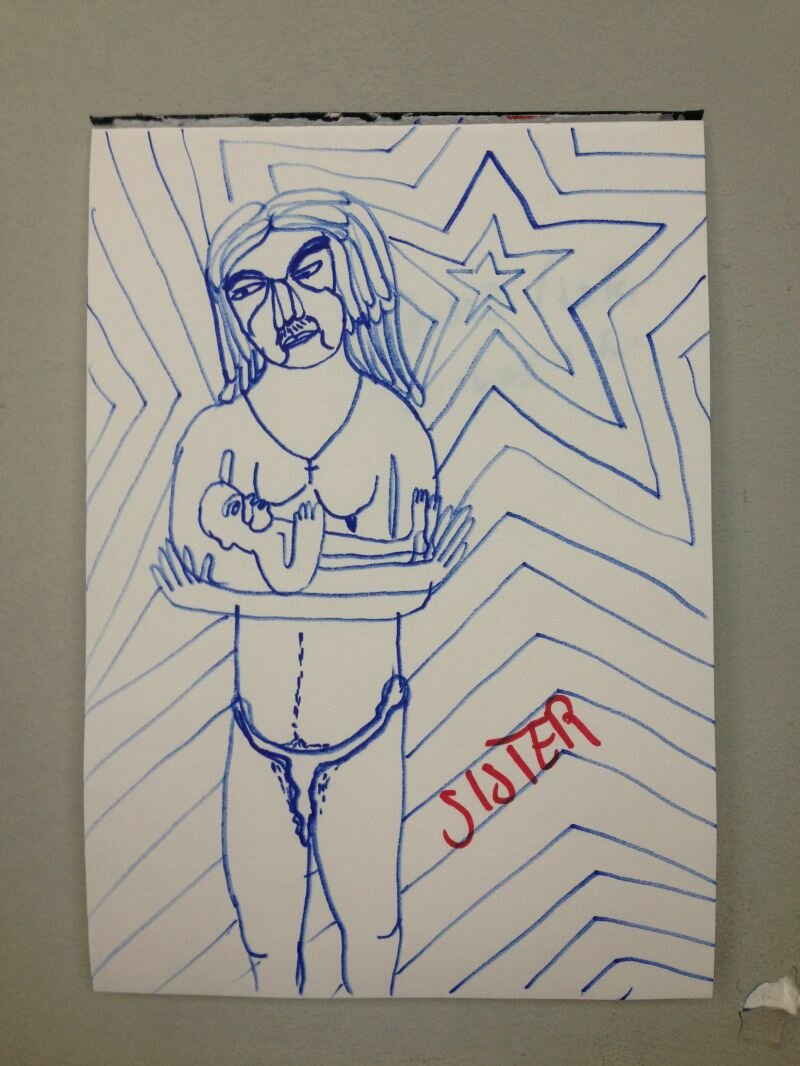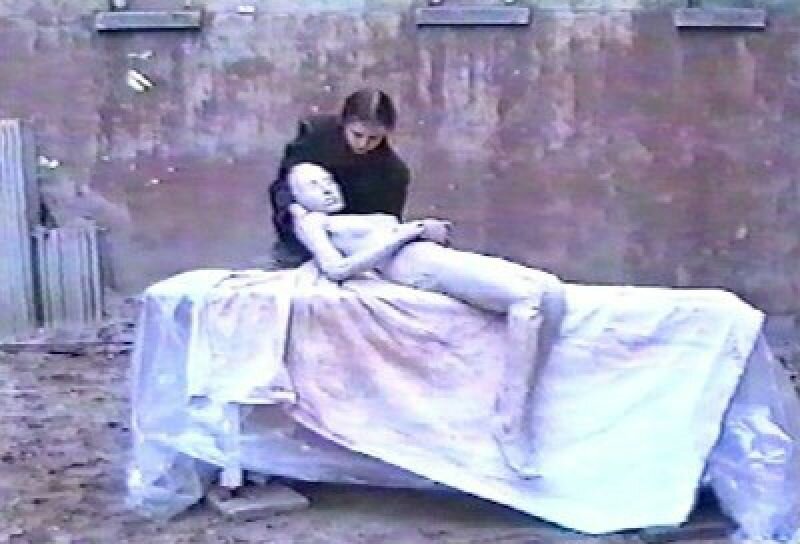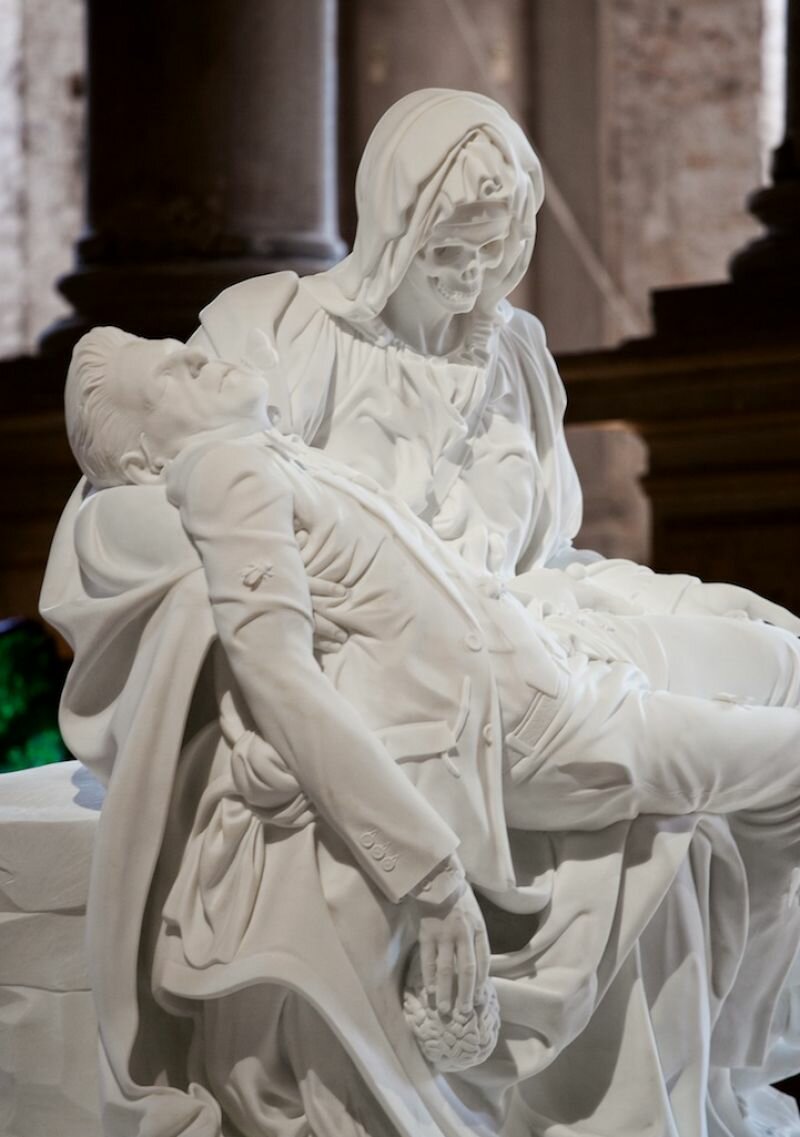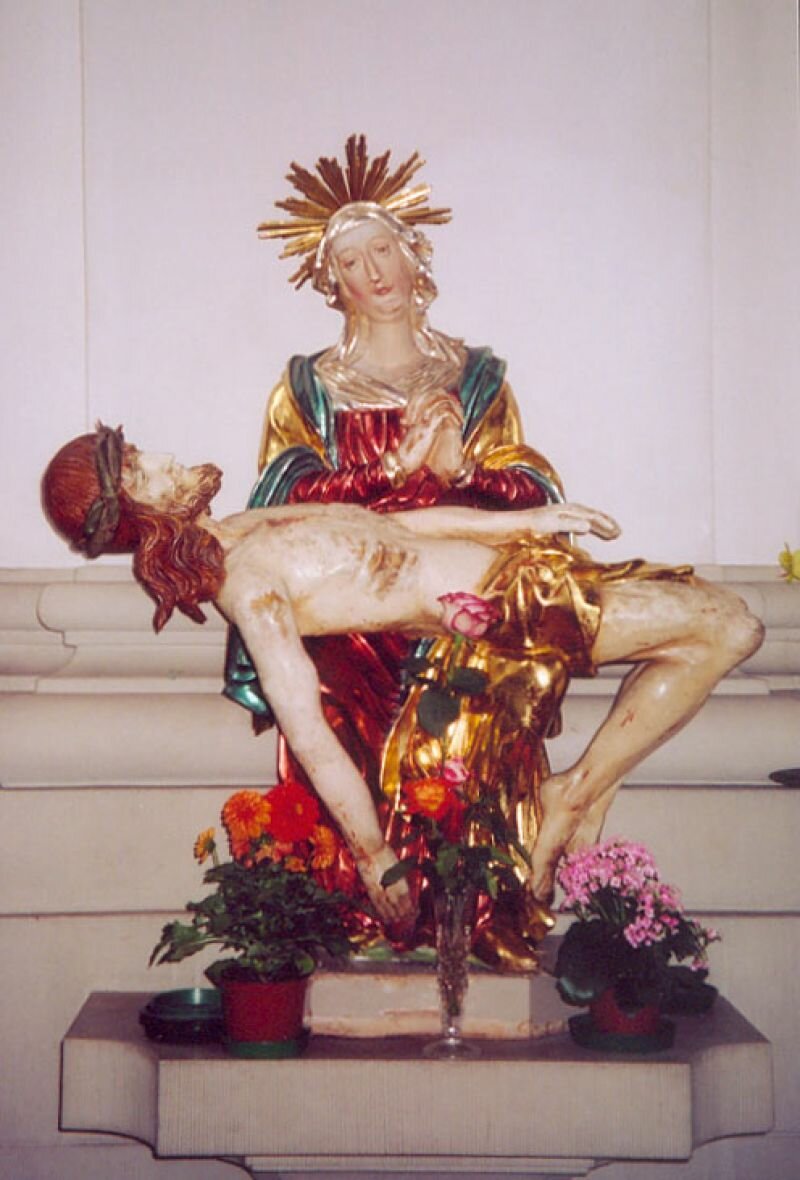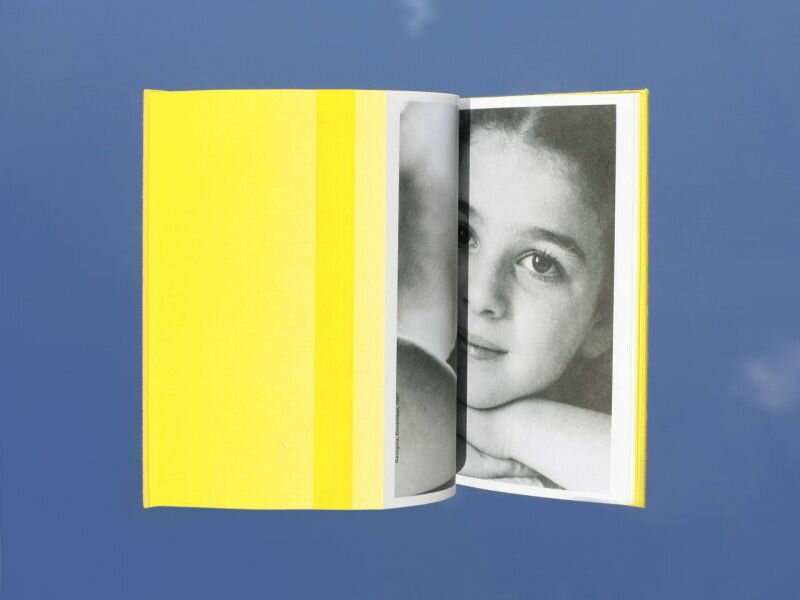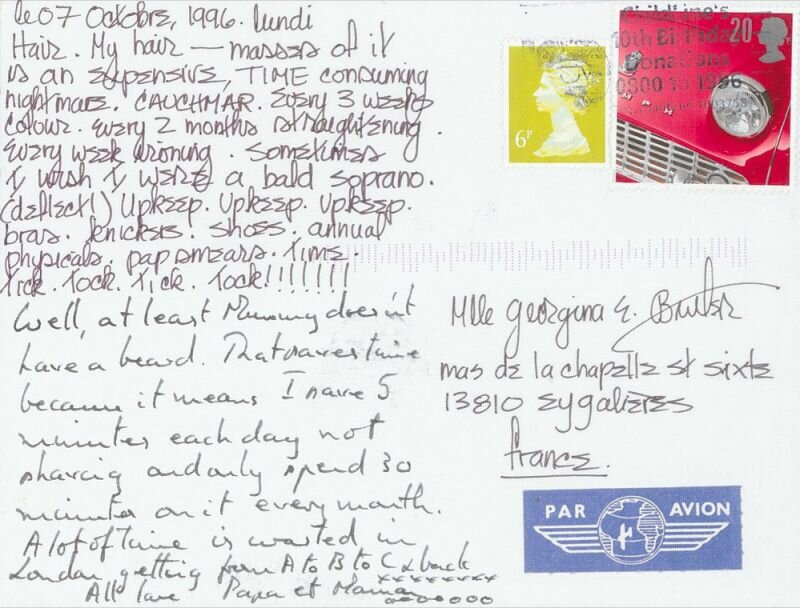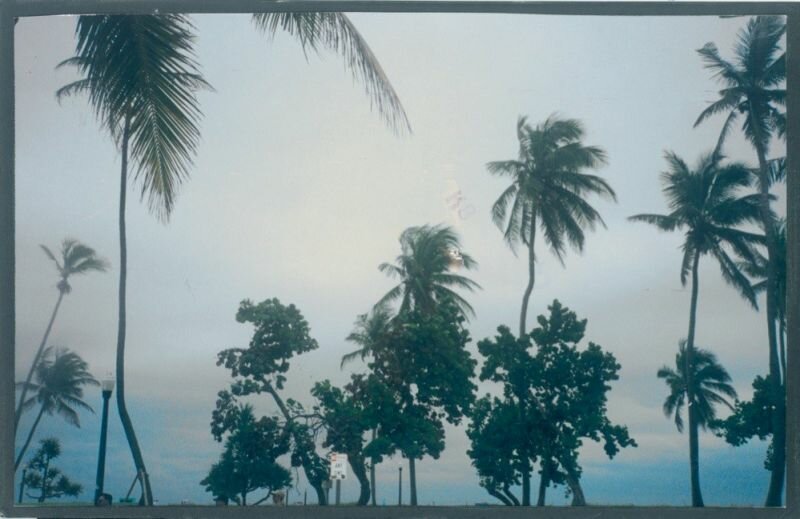
Het was per toeval dat ik stuitte op een groot archief van meer dan zeshonderd oude Kodachrome dia’s. Ik had eerder met de eigenaar, een blonde vrouw van in de veertig, gesproken over het ophalen van wat oude geluidsapparatuur. Ze zag hoe ik naar de grote stapel gele dozen keek en vroeg me, ‘ben je daar in geïnteresseerd, in die fotografie spulletjes?’

‘Ja! Ik ben zeker geïnteresseerd!’ Mijn hart stopte zowat, omdat ik wist dat die dozen vol dia’s moesten zitten.
‘Goed, neem ze maar mee,’ zei ze, ‘de persoon die ze zou komen halen reageert toch niet meer.’

Ik vertelde haar dat ik kunstenaar ben, en dat ik werk met gevonden beeldmateriaal. Ze begreep het belang van het behouden van cultureel erfgoed. Blij als een kind vertrok ik met mijn nieuwe schatten: de dozen vol dia’s, een paar 8 mm films, analoog film/foto camera’s, en het geluidsapparatuur.

Toen ik naar de eerste dia’s keek herkende ik haar meteen op de familiefoto’s waarop een groot deel van haar jeugd stond afgebeeld. Had zij ze niet per ongeluk weggegeven? Deze vraag vond ik vrij lastig omdat ik meestal nooit contact heb met de eigenaren het gevonden beeldmateriaal: normaal gesproken blijven ze anoniem. Ik vroeg me af of ik ze niet beter meteen terug kon geven, maar werd overwonnen door mijn nieuwsgierigheid.

Over een periode van twee weken bekeek ik zorgvuldig alle beelden, waaruit ik uiteindelijk een selectie van negen foto’s digitaliseerde. Als verrassing stuurde ik haar de beelden toe in een privé bericht, aan de ene kant met het idee dat ze het leuk zou vinden de beelden terug te zien, maar ook omdat ik het vreemd zou vinden om zonder haar toestemming de beelden te publiceren.
Het bleek een zenuwslopende situatie, omdat er altijd de mogelijkheid bestond dat ze de foto’s terug zou vragen! Na een tijdje reageerde ze, in shock, in een flits had ze de beelden bekeken en zichzelf gezien. Ze schreef met terug: ‘Wie ben je en waarom heb je mijn foto’s?’ Ik kon me voorstellen dat het best griezelig is, om ineens van een vreemde foto’s van jezelf opgestuurd te krijgen.

Gelukkig schreef ze me weer nadat ze het hele bericht gelezen had, en begreep ze mijn concept. Ze stemde in, en ik mocht van haar een serie samenstellen van haar dia’s. Ik bleef het vreemd vinden dat ze de dia’s weggeven had, maar wie ben ik om er tegen in te gaan? Voor haar was het niet belangrijk om bij de foto’s vermeld te worden, maar vroeg wel of ik de laatste foto in de serie kon verwijderen. Het is nu drie maanden geleden en vooralsnog heeft ze geen enkel interesse in de foto’s getoond.
Hier is het dus. De serie getiteld ‘A.k.a. the life of,’ vertelt het verhaal van het volwassen worden van een kind door de lens van een camera. Zelf denk ik dat de fotograaf haar vader moet zijn geweest. Met veel zorg zette hij een kader om haar ontdekkingen van nieuwe dingen, vakanties, verre reizen, haar speelsheid en liefde voor dieren, eindigend met het beeld van haar als tiener, kijkend naar haar eigen spiegelbeeld, waar langzaam haar eigen identiteit as jonge vrouw gevormd wordt.

Ik heb een achtergrond als experimentele filmmaker en ik geloof dat elk beeld zijn eigen verhaal bevat. De gevonden beelden behandel ik alsof ze frames uit een film in de maak zijn. Ik doorzoek vlooienmarkten, tweedehandszaken, en zelfs door afvalcontainers naar afbeeldingen. Door het herschikken van deze media probeer ik nieuwe verhalen te vertellen en een nieuwe context te geven aan bestaand materiaal.
